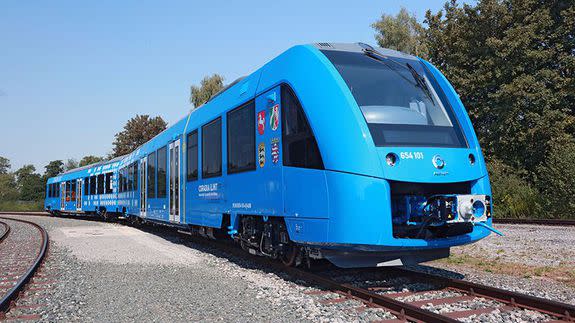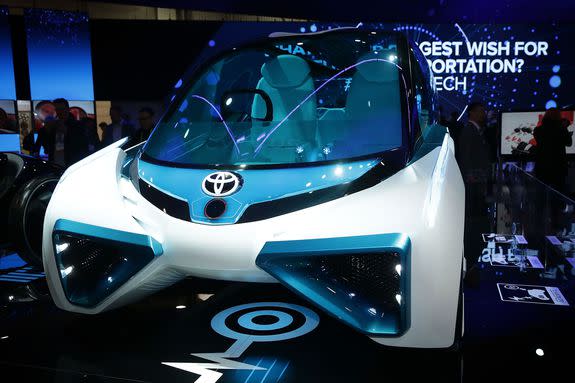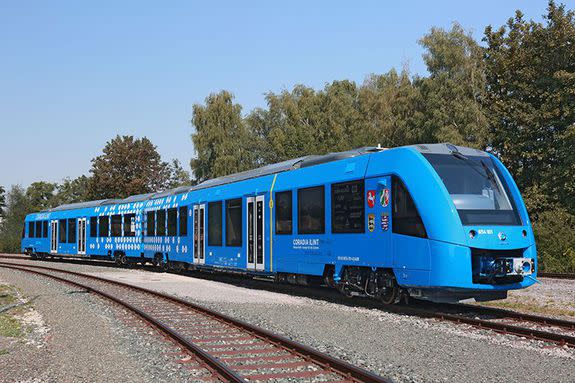The world's first zero-emissions train could be running by 2017

Passengers in Europe may soon be commuting on the world's first zero-emissions train.
French engineering giant Alstom is building a passenger train powered by hydrogen fuel cells and lithium-ion batteries. The train won't emit any greenhouse gases — just clean steam.
Alstom said its hydrogen-powered Coradia iLint trains could be running on German railroads as early as December 2017. The goal is to steadily replace Europe's diesel-powered trains, which spew toxic soot and carbon dioxide into the air.
SEE ALSO: Driverless cars, electric vehicles and mass transit could transform cities
The conglomerate announced the train technology this fall at the industry event InnoTrans in Berlin.
Both hydrogen fuel cells and lithium-ion batteries have been greeted with some skepticism in the transportation sector. Hydrogen is an extremely flammable gas, and some electronics with lithium-ion batteries have famously caught on fire. (Does Samsung's Galaxy Note7 ring a bell?)
But manufacturers of hydrogen-powered cars, such as Toyota and Honda, say their vehicles are actually safer than petroleum-fueled cars, since hydrogen quickly dissipates in the atmosphere once released from the tank. Gasoline, by contrast, leaks and pools, creating a larger source for prolonged burns.

Image: alex wong/Getty Images
A handful of Tesla electric cars have caught on fire in recent years after their lithium-ion battery packs were damaged. Yet Elon Musk's car company says it is managing these risks by strengthening the battery shield on Tesla vehicles.
Alstom said the German Federal Railway Authority began testing the hydrogen-powered passenger train this fall, and the approval process should be completed by the end of 2017.
Coradia iLint trains will use hydrogen waste from chemical plants, which produce the flammable, odorless gas as a byproduct.
The hydrogen tank will be large enough to fuel a nearly 500-mile journey and propel the train at up to 87 miles per hour, CityLab reported.

Image: Alstom
An onboard fuel cell will convert the chemical energy from hydrogen gas and oxygen into electrical energy and power the motor. Any electricity that's not immediately used will be stored in batteries attached to the car bottoms.
A smart energy management system will deliver fuel cell and backup power throughout the train as needed, to avoid wasting electricity and improve efficiency.
"Coradia iLint matches the range and performance of similar, conventional regional trains, but with nearly no impact on the environment," according to Alstom's video debuting the hydrogen train.
"It's only emission is steam of water and condensed water, while it operates with the lowest noise levels," Alstom said.
